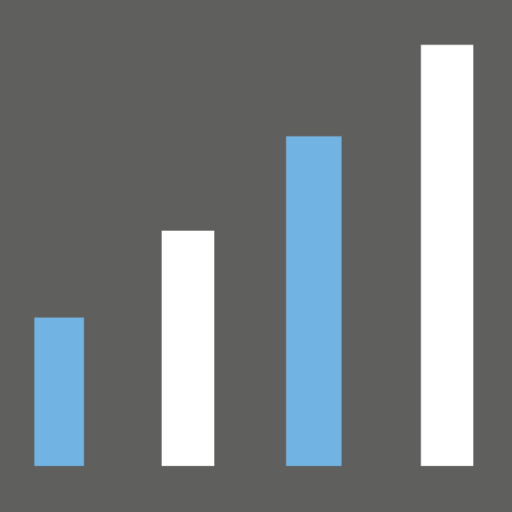Table of Contents
Market Overview
The global Heart Rate Sensor Market is experiencing significant expansion, fueled by the surging popularity of wearable technology and an increasing focus on personal health and wellness. These sensors are integral to various devices, including smartwatches, fitness trackers, and chest straps, enabling users to monitor their heart rate in real-time. The Heart Rate Sensor Market encompasses both photoplethysmography (PPG) and electrocardiography (ECG) technologies, each catering to different accuracy and application needs. Key market characteristics include continuous technological advancements, increasing integration in consumer electronics, and the rise of remote patient monitoring.
Market Size and Forecast
In 2024, the global Heart Rate Sensor Market was valued at US$ 1675 million. It is projected to reach US$ 6467 million by 2031, demonstrating a robust Compound Annual Growth Rate (CAGR) of 21.6% throughout the forecast period. This growth is largely attributable to increased demand from the burgeoning wearable device sector and the growing adoption of remote patient monitoring systems. The market’s trajectory indicates strong performance, propelled by consumer-driven innovation and advancements in healthcare technology.
Key Players
The following companies are key players shaping the global Heart Rate Sensor Market:
- Analog Devices
- Maxim Integrated
- Philips
- AMS
- Murata Manufacturing
- Seiko Epson
- New Japan Radio
- OSRAM
- PulseOn
- Valencell
- Salutron
- Polar Electro
- Weltrend
- PixArt Imaging
- Shenzhen Huajing Baofeng
- SOON
Competitive Landscape
The Heart Rate Sensor Market is competitive, with players focusing on product innovation, strategic alliances, and geographic expansion. Key competitive differentiators include sensor accuracy, power efficiency, and integration capabilities. Companies are investing in R&D to create more precise and reliable sensors, while also focusing on strategic partnerships to broaden their market reach and product offerings.
Growth Drivers
Several factors contribute to the expansion of the Heart Rate Sensor Market:
- Increasing Wearable Device Adoption: The growing popularity of smartwatches, fitness trackers, and other wearables is a primary driver.
- Rising Health Awareness: Consumers are increasingly proactive about monitoring their health and fitness levels.
- Remote Patient Monitoring: The demand for remote health monitoring solutions for chronic disease management is growing.
- Technological Advancements: Continuous innovation in sensor technology is improving accuracy and efficiency.
| Growth Driver | Description | Impact |
|---|---|---|
| Wearable Adoption | Increasing popularity of wearables | High Demand for Sensors |
| Health Awareness | Growing consumer focus on fitness | Greater Sensor Utilization |
| Remote Monitoring | Rise in remote healthcare solutions | Expansion of Applications |
Market Trends
Notable trends influencing the Heart Rate Sensor Market include:
- High-Accuracy Sensors: Emphasis on developing sensors that deliver precise measurements.
- Power Efficiency: Design improvements focused on extending battery life in wearable devices.
- Advanced Algorithms: Sophisticated algorithms for data processing and noise reduction.
- Multi-Sensor Fusion: Integrating data from various sensors for comprehensive health insights.
Opportunities
The Heart Rate Sensor Market provides numerous opportunities, such as:
- Specialized Applications: Developing sensors for specific use cases like sports performance and sleep analysis.
- Medical Devices: Expanding integration into medical devices for cardiac and arrhythmia monitoring.
- Emerging Markets: Targeting regions with growing wearable tech adoption and healthcare investments.
- Custom Solutions: Catering to niche segments like athletes, seniors, and patients with chronic conditions.
Revenue Analysis
The Heart Rate Sensor Market’s revenue is primarily generated through the sale of sensors to wearable device manufacturers and medical device companies. The average selling prices (ASPs) vary based on sensor type, accuracy, and additional features. Revenue growth is closely tied to the shipment volumes of wearable devices and the adoption rates of remote patient monitoring solutions.
Demand Forecast
The demand for heart rate sensors is projected to increase steadily, driven by the aforementioned growth factors. The market will also benefit from continuous innovation, leading to improved sensor performance and increased adoption across diverse sectors. The long-term outlook for the Heart Rate Sensor Market remains positive, with ample opportunities for market players to expand and innovate.
Regional Analysis
Key regional markets for heart rate sensors include:
- North America: Strong market presence due to high adoption of wearables and emphasis on health.
- Europe: Significant market, driven by investments in healthcare technology and aging population.
- Asia Pacific: Fastest-growing market, with increasing disposable incomes and wearable adoption.
- South America and Middle East & Africa: Emerging markets showing increasing interest in health and fitness.
| Region | Key Characteristics | Growth Prospects |
|---|---|---|
| North America | High wearable adoption, advanced healthcare | Stable Growth |
| Europe | Tech innovation, aging population | Moderate Growth |
| Asia Pacific | Fastest-growing, increasing disposable incomes | High Growth Potential |
Segmentation by Type
The Heart Rate Sensor Market is divided into:
- Photoplethysmography (PPG) Sensors: Dominant segment due to low cost and easy integration.
- Electrocardiography (ECG) Sensors: Used in medical devices requiring higher accuracy.
Segmentation by Application
Major applications of heart rate sensors include:
- Smart Wristbands: Popular for basic fitness tracking.
- Smartwatches: Leading application for comprehensive monitoring.
- Headsets: Used for stress monitoring and user experience enhancement.
- Smartphones: Integrated for limited health monitoring functions.
- Others: Includes medical devices, sports equipment, and automotive systems.
Challenges and Restraints
The Heart Rate Sensor Market faces challenges such as:
- Ensuring Accuracy: Maintaining reliability in challenging environments.
- Data Privacy: Addressing security concerns related to health data.
- Competition: Facing alternative sensing technologies.
Future Outlook
The Heart Rate Sensor Market is expected to maintain strong growth, driven by increasing adoption of wearable technology and advancements in remote health monitoring. Innovations such as AI-powered analytics and non-invasive sensors will propel the market forward.
| Aspect | Future Trend | Market Impact |
|---|---|---|
| Technology | Non-invasive sensors | Improved accuracy, ease of use |
| Connectivity | Remote monitoring systems | Enhanced chronic disease management |
| Data Analytics | AI-driven insights | Personalized health recommendations |





